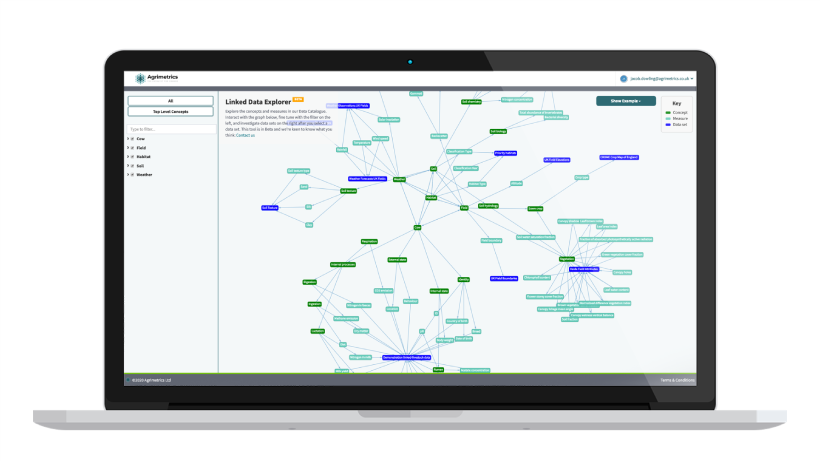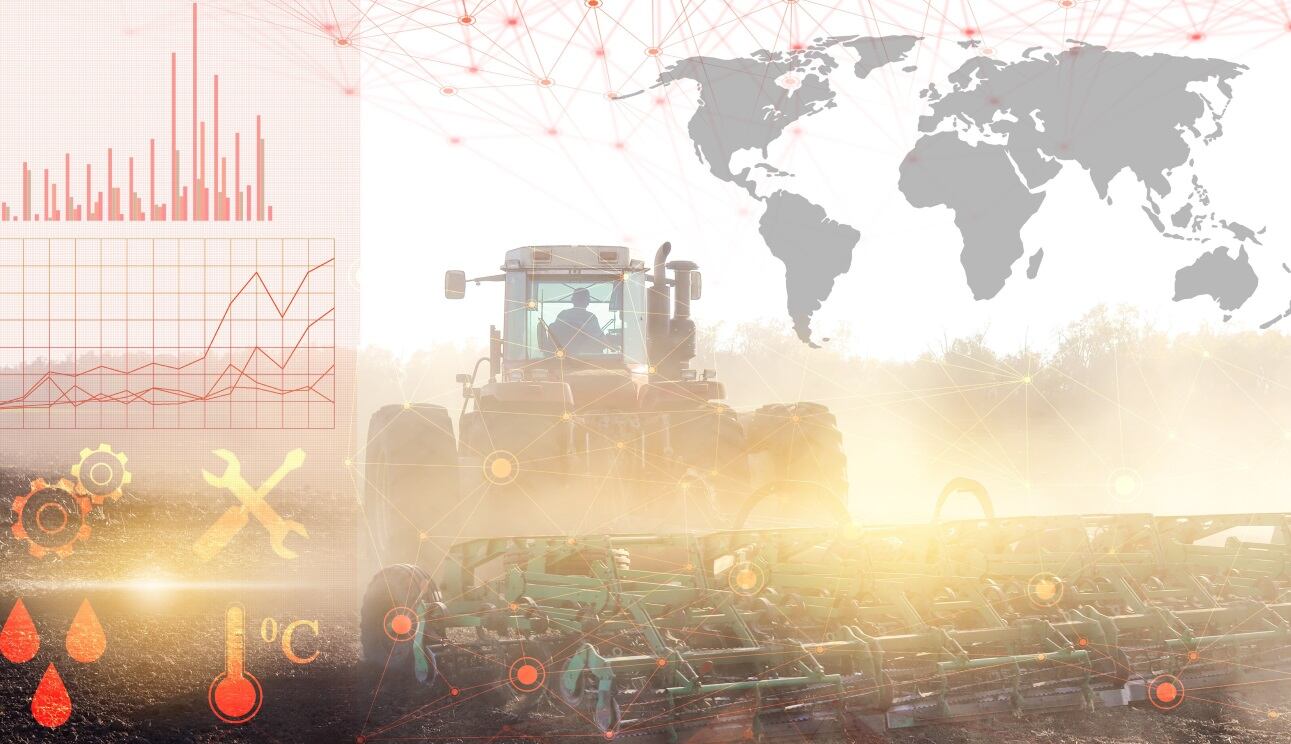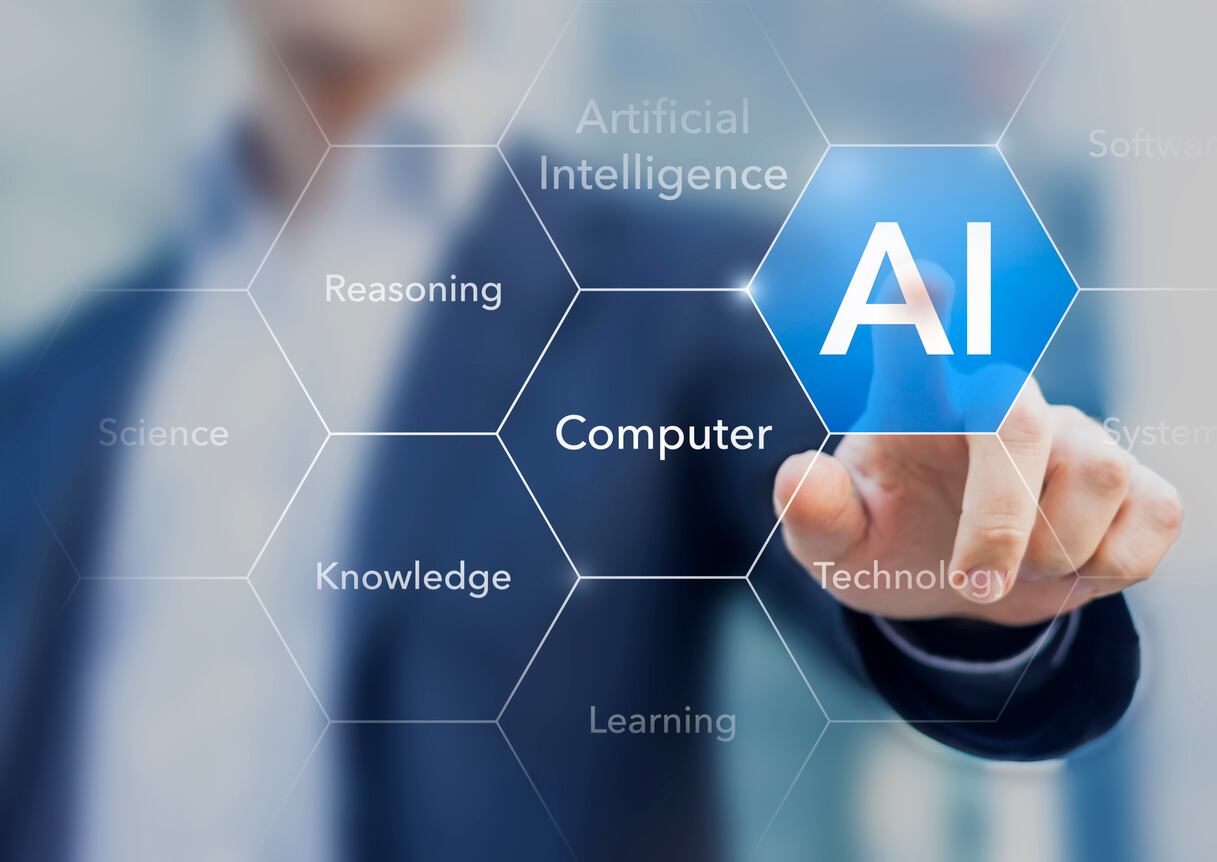"You may have been looking at data in the wrong way," according to Dr Matthew Smith, chief product officer at Agrimetrics. "Data is normally viewed in a dataset, but this is often not the most effective way."
Traditionally, Dr Smith explained, there are three ways that the links between data are viewed. First, and most common, is to look at whether the properties of one dataset make it comparable with another. Second, is to consider space-time – whether data can be related according to physical space and time. Third, domain – related data through real-world concepts such as ‘crop, cow or banana’.
"The domain view is the most valuable, yet it is underused," Dr Smith believes. "It will enable us to meet challenges such as reducing agriculture's carbon footprint, end-to-end traceability, improving and predicting yield. This gap led us to create Linked-Data Explorer."
Linking data to streamline R&D
The Linked-Data Explorer illustrates how data are connected. When you perform a search, it will flag other information relevant to the thing you searched for. For example, in the case of a growing crop, that could include weather forecasts from the Met Office, satellite imagery from Airbus, crop growth and drought risk calculations from researchers, soil chemistry, or social media data.
"This saves a huge amount of time for users, whilst alerting them to data they may not have known was relevant – or even exist. However, the most exciting benefit is for artificial intelligence. In the future, AI will be able to read this data and understand the links between them. It will be able to uncover dangers and solutions that we didn't even know to look for,” predicted Dr Smith.
Previously, a user would need to identify the relevant datasets themselves. As datasets are rarely compatible, they would then have to manipulate the data; this process could take months or years for complex projects. Agrimetrics claim it can half these timelines in some cases.
“We’re referring to end-to-end pipelines that address problems through obtaining data held in our Data Marketplace. BASF’s creation of wHen2gO – a decision support tool that helps farmers optimise pesticide applications – is an example of this. Previously, this project would have started with a discovery phase, where they identify the data they need – and then the dataset that contains it and the owner of that dataset. Access would then have to be negotiated with the owner, and then data from different owners transformed and manipulated into a single analysis-ready file before the ‘real work’ can begin.
“In funded research projects, it would not be uncommon for this process to take up to half of the total project time, which could be many months or even more than a year. With BASF, we drastically condensed this timeframe because all the data they needed was available through our Marketplace: pre-linked, analysis-ready and immediately accessible,” Dr Smith told FoodNavigator.
“Our work with Barfoots, the food and farming company, is another example. Our data streamlined the creation of a harvest prediction model, which streamlined their international supply chains.”
What applications could this approach most benefit? Dr Smith suggested potential R&D pipelines include ‘any project that would benefit from data held in our marketplace, which currently includes crop analytics, field level attributes, weather data, crop models, ecological, natural capital and sustainability data. “In the short to mid-term, arable farming and sustainability are too very promising areas.”

Building a more sustainable food system
Dr Smith expects this approach will contribute to a more sustainable food system in ‘multiple ways’.
“Delivering a sustainable food system will fundamentally depend on exchanging data. It is vital for underpinning the checks and balances we need to ensure the system is sustainable; sustainability accounting is going to become incredibly important and connecting data is vital for this.
“However, the problem has been that collecting such sustainability data has been difficult, expensive and slow. The core capability we provide is a mechanism to reduce the costs of data consumers and data providers in getting value from their data. This makes the exchange of sustainability information far more cost effective, far more sustainable.
“This will accelerate the adoption of new business practices and opportunities that require sustainability accounting,” he predicted.
An example of this approach in action would be accounting for the overall carbon footprint of the food supply chain, from farm to fork. Measuring emissions in your supply chain is a vital step unlocking the opportunity for continuous improvement and allowing organisations to be ‘rewarded for making those efforts’.
Dr Smith said the ‘biggest gains’ will be made by companies that ‘embrace bringing improvements in sustainability to market’.
He observed: “The primary production sector is under pressure to do this right now and so our platform provides a mechanism to enable them to evidence their efforts to those willing to reward it: retailers, end consumers, government. However, the improved ability to exchange sustainability information will enable sustainability improvements across the agri-food sector: processors, retailers, finance: product traceability being one example.”
Differentiated approach to data ownership
According to Dr Smith ‘many’ businesses have been working to connect food and farming data with the aim of driving new insights and products. What makes Agrimetrics’ approach different is its adoption of a marketplace model.
“This model does not seek to take control of anyone’s data, rather it provides ‘data owners’ with a shopfront for their data and a way to transform their data into revenue. At the same time, this makes the process of finding, accessing and using data significantly easier for ‘data consumers’ as it brings data together in one place.
“Our Data Marketplace is built on top of a Knowledge Graph, using Semantic Web Technologies. This is a method for organising data that is also used by Google and Amazon. It involves creating an ontology – a way of describing the data and the relationships between data. To our knowledge, we are the only commercial organisation doing this in the ag sector. Building our Data Marketplace in this way has enabled the creation of Linked-Data Explorer, which allows the information in our Marketplace to be queried by concept.”
What does this mean in practise? “Someone looking for information about a crop could quickly access analysis-ready data from, for example, ten datasets using a simple visual tool. Previously, they would have had to research and access each dataset independently. We believe that we are the only organisation in the ag sector employing linked data technologies in this way, whilst providing value back to data owners.”
‘Without AI we are unlikely to reach improvements in productivity and sustainability we need’
Dr Smith is convinced that AI and tech-driven solutions are essential for securing the future resilience of the food sector.
“Without AI, we are highly unlikely to reach the improvements in productivity and sustainability that we need.”
However, alongside developments in machine learning, Dr Smith stressed that it all comes back to data quality. “The potential applications and value of AI is tied extremely closely to the availability of high quality data in the appropriate format; it doesn’t matter how advanced the algorithm is if it’s being fed with poor data. The requirement for feeding AI with data was a key motivator in driving us the build our Marketplace in the way we need.”
As the complexity of AI and machine learning algorithms progress, Dr Smith expects artificial intelligence to play an ever-greater role in informing decision making. “We anticipate a time when AI will be able to self-serve in our Marketplace: let loose to find answers to complex questions that we didn’t even know to look for; to find relationships between variables we never knew existed. We've seen this happen already in fully-connected Smart Factories - one biopharmaceutical manufacturer was able to increase vaccine yields by 50% upon connecting and analysing data regarding every step of its manufacturing process.”




